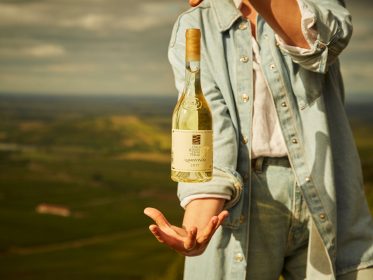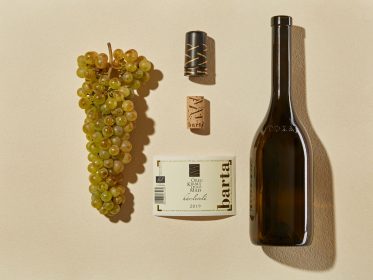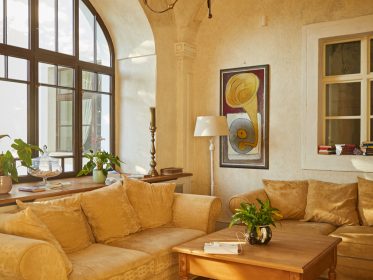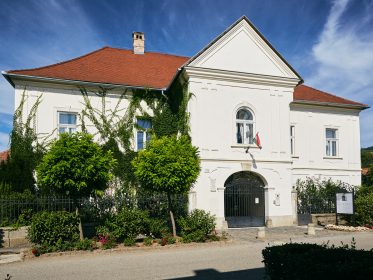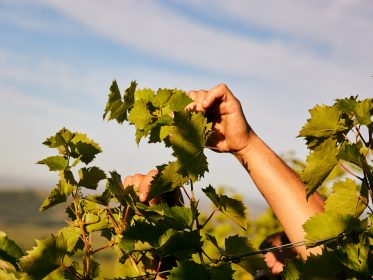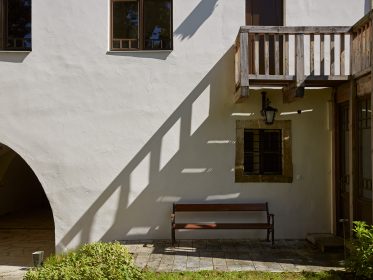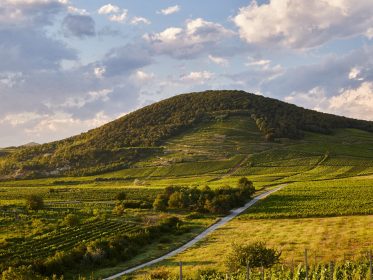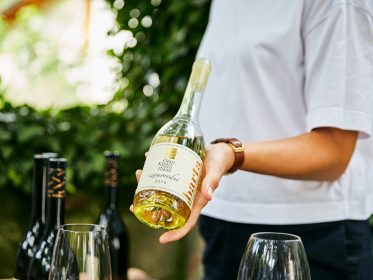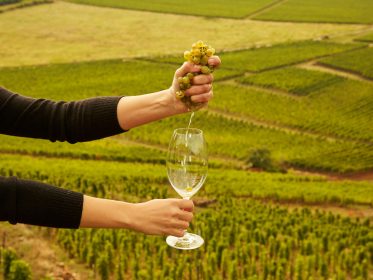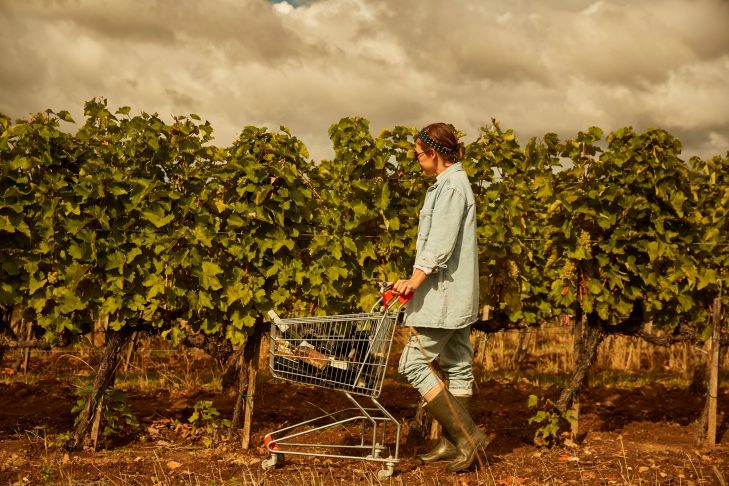Barta Winery: five hundred years of history
After the Turkish invasion of the Szerémség (aka Sirmium) in the early 16th century, Tokaj became destined by its geography, grape varieties and microclimates to take over as Hungary’s dedicated sweet wine region and eventually become the world’s second demarcated wine region in 1737.
Following the first golden age of the 17th and 18th centuries, sweet wines began to lose their popularity in the 1800s before the 20th century saw nothing but a series of disasters for Tokaj. By the turn of the 21st century, however, the region was not only producing natural sweet wines worthy of the name Tokaj again, but also dry wines that would become the growth driver in a mere decade. At the same time, high-lying, steep vineyard sites that had been abandoned mostly during the 1950 and 1960s were gradually brought back to production.
Dry wines have allowed a deeper understanding of the unique Tokaj terroir: some of the 415 vineyard sites on the outskirts of the region’s 27 communes can produce special wines that typify the place they come from, particularly if based on Furmint or Hárslevelű, the two leading grapes that account for over 85 per cent of all plantings, some 5800 hectares [14,000 acres] in the region.
Since 2003,Barta has been active in two vineyard sites of the Mád area.Having replanted all our 10 hectares [25 acres] in the Öreg Király Vineyard in 2004 and 2005, and 3.4 [8.4 acres] out of 17.5 hectares in the Kővágó in 2017, we strive to make dry Furmint and Hárslevelű varietals to express the Tokaj terroir at its best, as well as continuing the tradition of producing two of the main botrytised Tokaj styles, Szamorodni and Aszú.
TOKAJ – A PROTECTED DESIGNATION OF ORIGIN
Tokaj is a designation of origin that is protected in the spirit of the 1737 Royal Charter, but now in accordance with European regulations. PDO (OEM in Hungarian) represents the highest level of protection of designation of origin in Europe, PDO wines being the most closely linked to their place of production.
Under these regulations, Tokaj PDO winescan only be made from Furmint, Hárslevelű, Sárgamuskotály, Kövérszőlő, Zéta or Kabar grapes, grown in one of 27 towns and villages that comprise the Tokaj region, and may only be released in Tokaj white wine, Tokaji Pezsgő, Late Harvest, Máslás, Fordítás, Száraz szamorodni, Édes Szamorodni, Aszú or Eszencia product categories.
For the traditional botrytised wine styles, some special rules of vinification apply, as well. Such rules include that Aszú wines must be produced through the maceration, in a base must or a base wine, of botrytis-affected, shrivelled berries that are individually handpicked from the vines, and the resulting wine must be aged in oak for a minimum of eighteen months. For sweet Szamorodni, partially botrytised bunches must be harvested and vinified into a wine that must then be aged in oak for at least six months. It is a matter of course that no artificial sweetening is allowed (the only exception being sparkling wines, i.e. Pezsgő). Also, Tokaji wines can only be bottled within the Tokaj region.
ROYAL TERRACES
On your way from Szerencs to Mád the spectacular view of one of the most imposing and steepest vineyards on King’s hill (Király-hegy) is bound to catch your attention: Old King vineyard (Öreg Király-dűlő). Not only its exceptional position, but also the continually constructed terraces built stone by stone over the centuries make it stand out in the beautiful landscape. Vines were already cultivated on this land way back in the 13th century, and one of the most highly prized Tokaji wines originated from here, a nectar that captured the powerful Rákóczi family too. However, as for everything unique, suffering is involved too: the stony ground and steep slopes make this land extremely difficult to tend.
The grapes grown here were always of special quality but, as they did not satisfy the needs of quantity-driven grape production, this vineyard was abandoned after World War II, and was gradually reclaimed by the black locust forest. Most of the area was purchased by the Barta family in 2003, and then began the replanting that continues to this day.
Visitors can be witness to the interesting contrast of young vines lined between the several-hundred-year-old terraces. South-, southwest-facing, the Old King vineyard (Öreg Király-dűlő) extends over 10 hectares. And the Barta Winery owns another 17-hectare south-, southwest-facing, mostly fallow, plot in the Kővágó vineyard, 3.5 hectares of which was brought back to production in 2017.
The vineyard soils are stony: volcanic rhyolite tufa with some zeolite and red clay. Some 80 % of the land is planted with T85 and the old-type small-bunch Madárkás Furmint clones, and the rest with Hárslevelű, Sárgamuskotály and Kövérszőlő. About half of the estate is planted with cordons at 1.4 x 0.8 m and 1 x 1 m and can only be cultivated by hand. The other half is low-cordon at 1.8 x 1 m density. The number of vines varies between 10 000 and 5 800 per hectare. We do not use herbicides or systemic chemicals in this vineyard we cultivate traditionally.
KŐVÁGÓ VINEYARD
Lying east of Mád and west of Király, the Kővágő has a total area of 33 hectares. One of the best sites in the village, this vineyard was ranked first class as early as 1670 by Márton Halápi’s very first Tokaj vineyard classification, based on the quality and quantity of botrytised berries it was able to consistently produce. Subsequent historical classifications would all reaffirm this ranking. The name Kővágő means Stone Cutter, alluding to the quarry that has been in operation at the bottom of the vineyard since the Middle Ages. Most of Kővágó is out of cultivation today.
Barta’s 17.5-hectare parcel in the Kővágő lies at an elevation of 285 metres above sea level and is relatively flat, with sufficient water retention and sun exposure, which greatly help grapes achieve perfect ripeness. Facing the south, the site has a microclimate that contributes to high crop quality and fosters botrytisation. The layers under the thin topsoil comprise rhyolite red clay, mixed with hydro-quartzite and andesite tuff, as well as rhyolite tuffs. The site is rich in minerals, which allows the production of age-worthy wines.
The very first wine from the Kővágő, called KVG Furmint and Hárslevelű 2018, testifies to the vineyard’s potential to give complex, elegant and ageable wines with intense notes of salt, spice and minerals.
Kővágó’s history has been well-documented since the 15th century.
1413 – First written mention in relation to an inheritance lawsuit
1610 – Kis [Small] Kővágő is first distinguished from Nagy [Great] Kővágó
1672 – The Bocskay family’s parcel separates from the rest of the Kővágó to become known as today’s Bacskai Vineyard
1635 – The Rákóczi family becomes the main owner of the Kővágő through inheritance
1670 – The ducal branch of the Rákóczis pawn their parcels in the Kővágő to pro-Habsburg Baron János Maholányi
from 1711 – Following the Rákóczis loss of influence in Tokaj, the Erdődy and Orczy families start buying parts of the Kővágó
after 1750 – The Máriássy family becomes and remains the major owner of the Kővágó until 1945
1951 – The decades of mass production in the communist era saw the vineyard abandoned and gradually overgrown by sylvan vegetation
1993 – The low-lying stretches of the Kővágó are planted by the government-owned Tokaj Kereskedőház
2008 – Károly Barta purchases a 17.5-hectare, south to south-east facing fallow tract of the Kővágő
2017 – Barta Pince plants 3.4 hectares of their site at the top of the Kővágó, mostly with Furmint and some Hárslevelű vines
Philosophy
We strive to preserve as best as possible both the appearance and soils of these exceptional stretches of land for future generations. As the land “slept through” the decades of unrestrained chemical use, the soils are still untouched today.
During vine cultivation we use organic methods and make our wines with as little interference as possible and maximum cleanliness.
In line with this approach we use spontaneous fermentation almost exclusively, trusting the natural yeasts found in the grapes and cellar to do their work.
We would like our wines to reflect the unique qualities of their exceptional terroir: the land, vineyard orientation, weather conditions of the vintage and the character of those involved in making the wines – to present exclusive and unrepeatable lots.
Since the outset, we have used a low-intervention, i.e. fundamentally organic, approach to winemaking. And this is not just some marketing talk on our part, but something that shines through in the quality and added value of our wines. We strive to preserve these exceptional vineyard sites in the best condition possible for generations to come.
As these vineyard sites luckily slept through the decades when the mindless use of chemicals was prevalent, it came natural to us to use organic farming methods from day one. Organic farming is not limited to pest control; rather, it is a holistic philosophy that requires one to re-evaluate the entire gamut of cultivation and treatment methods.
We obtained certification as an organic grower in 2018, which means that a ‘certified organic wine logo’ now adorns our labels – a piece of ‘written evidence’ of our commitment to quality and sustainability.
Good pest control practices pivot on canopy management and maintaining a balance in the viticultural biotope.
Environmental protection and sustainability are, however, by no means the only arguments for organic wines. Wine has long been known to have a positive impact on human health. The mineral content of white wines has antioxidant effects. Because such wines are free from any chemical residues and artificial matter, and all the benign compounds are retained in the wine during the vinification process, organic wines offer an increased health benefit.
Organic winemaking is all about creating something new and unique in perfect harmony with nature and traditions.
We obtained certification as an organic grower in 2018, which means that a ‘certified organic wine logo’ now adorns our labels – a piece of ‘written evidence’ of our commitment to quality and sustainability.
Organic wines are increasingly sought after in the world wine market. At Barta, the course was laid out for us, as both the Öreg Király and the Kővágő Vineyards had been lying fallow for decades, and thus stayed clean and ready for organic farming right after we replanted them.
Suites Rákóczi- Aspremont Mansion
- Country breakfast from the pantry
- All our exclusively furnished suites have a generous, air-conditioned living room and bedroom, plus a private bathroom.
- We have installed a wine cooler in each suite so you can taste the selected wines of our winery at any time.
- For uninterrupted peace and calm, there is no television in any of the suites. Those who prefer not to miss out on happenings in the wider world can use the unlimited internet which is available throughout the mansion.
- In our spacious Cigar Room, complete with modern ventilation you can enjoy our special wines in the company of a top quality cigar.
- After discovering the natural and cultural treasures of the Tokaj wine region and tasting our outstanding wines, choose a different wavelength: immerse yourself in music in our Music Room and allow yourself to switch off completely.
